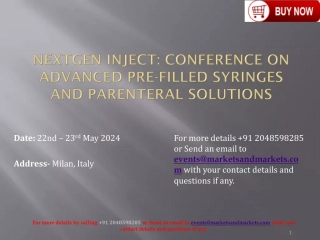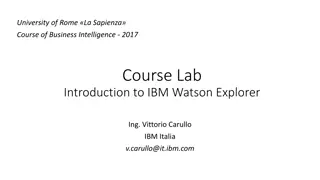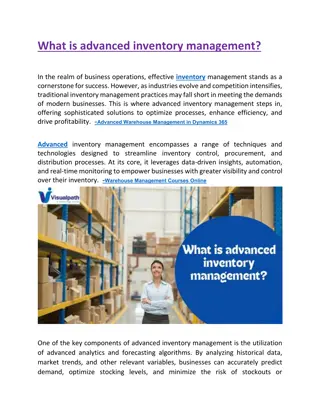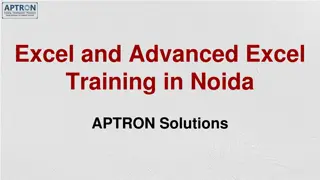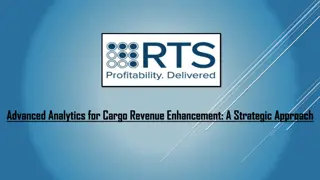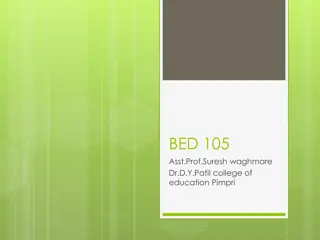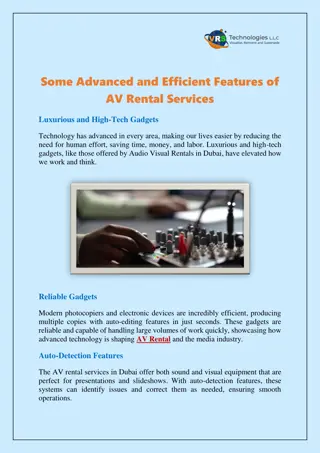
Advanced Techniques for ILP in Computer Architecture
This material covers advanced techniques for improving Instruction Level Parallelism (ILP) in computer architectures. It discusses topics such as pipeline optimization, branch prediction, dynamic scheduling, out-of-order execution, and strategies for achieving CPI < 1. Various issues in multiple issue instruction execution and strategies for multiple issue processors like Superscalar and Very Long Instruction Words (VLIW) are also explored.
Download Presentation

Please find below an Image/Link to download the presentation.
The content on the website is provided AS IS for your information and personal use only. It may not be sold, licensed, or shared on other websites without obtaining consent from the author. If you encounter any issues during the download, it is possible that the publisher has removed the file from their server.
You are allowed to download the files provided on this website for personal or commercial use, subject to the condition that they are used lawfully. All files are the property of their respective owners.
The content on the website is provided AS IS for your information and personal use only. It may not be sold, licensed, or shared on other websites without obtaining consent from the author.
E N D
Presentation Transcript
CS5100 Advanced Computer Architecture Advanced Techniques for ILP Prof. Chung-Ta King Department of Computer Science National Tsing Hua University, Taiwan (Slides are from textbook, Prof. Hsien-Hsin Lee, Prof. Yasun Hsu) National Tsing Hua University
So Far, Focus on ILP for Pipelines Branch prediction Shorten branch decision time reduce impact of control dependence Br PC Fetch Rename Dispatch Reg File Exec Commit Dynamic scheduling and out-of-order execution: Do not allow a long-latency instruction to block the execution of following independent instructions PC Fetch Rename Dispatch Reg File Exec Commit ROB ROB and speculative execution 1 1 National Tsing Hua University
Pipelining Delivers CPI = 1 at Best How to get CPI < 1? Issuing and completing multiple instructions/cycle Challenge: checking and resolving dependences among the instructions issued at the same cycle Lecture outline: Multiple issue and static scheduling (Sec. 3.7) Dynamic scheduling, multiple issue, and speculation (Sec. 3.8) Multithreading: exploiting thread-level parallelism to improve uniprocessor throughput (Sec. 3.12) Advanced techniques for instruction delivery and speculation (Sec. 3.9) 2 National Tsing Hua University
Dependences in Multiple Issue Instruction status: Instruction LD LD MULTD SUBD DIVD ADDD Exec Write Busy Address No No No Issue Comp Result 1 3 2 4 3 4 5 j k F6 F2 F0 F8 F10 F6 34+ 45+ F2 F6 F8 F10 R2 R3 F4 F2 F6 F2 4 5 Load1 Load2 Load3 If DIVD is to be issued at the same cycle as SUBD, how to know and resolve the RAW hazard between them? Reservation Stations: S1 Vj S2 Vk RS Qj RS Qk Time Name Busy 2 Add1 Add2 Add3 10 Mult1 Mult2 Op SUBD M(A1) M(A2) Yes No No Yes MULTD M(A2) R(F4) Yes DIVD R(F6) Add1 Register result status: Clock 5 F0 Mult1 M(A2) F2 F4 F6 F8 Add1 F10 Mult2 F12 ... F30 Qi 3 National Tsing Hua University
Strategies for Multiple Issue Superscalar: varying number of instructions/cycle (1 to 8), scheduled by compiler (static) or by HW (dynamic) IBM PowerPC, Sun UltraSparc, DEC Alpha, Pentium 4, i7 Very Long Instruction Words (VLIW): fixed number of instructions (4-16) in a long instruction or a fixed instruction packet, scheduled statically by compiler Intel architecture-64 (IA-64) 64-bit address (renamed: Explicitly Parallel Instruction Computer (EPIC) ) 4 National Tsing Hua University
Strategies for Multiple Issue Superscalar: fetch and issue multiple instructions at the same cycle 1 2 3 INSTRUCTIONS SUCCESSIVE 1 IF DE EX WB 2 3 4 4 5 6 5 6 7 8 0 1 2 3 4 5 6 7 8 9 TIME IN CYCLES (OF BASELINE MACHINE) 9 IF WB EX DE 5 National Tsing Hua University
Strategies for Multiple Issue VLIW (Very Long Instruction Word): Use multiple independent functional units Multiple operations packaged into a very long instruction Compiler responsible for ensuring hazard-free INSTRUCTIONS SUCCESSIVE 1 IF DE EX WB 2 3 4 5 6 0 1 2 3 4 5 6 7 8 9 WB IF TIME IN CYCLES (OF BASELINE MACHINE) DE EX 6 National Tsing Hua University
Issuing Multiple Instructions/Cycle Static multiple issue Compiler handles data and control hazards and decides what instructions can be issued in the same cycle Often restrict mix of instructions can be initiated in a clock Recompilation required for machines with diff. pipelines Dynamic multiple Issue Fetch, decode, and commit multiple instructions Use dynamic pipeline scheduling, HW-based speculation and recovery Always beneficial if compiler can help, but recompiling not required for new machines 7 National Tsing Hua University
Comparing Multiple-Issue Processors 8 National Tsing Hua University
The VLIW Approach High HW cost for checking parallelism, so VLIW: tradeoff for simple decoding A VLIW instruction has many fields for many operations, e.g., 2 INT, 2 FP, 2 memory, 1 branch 16--24 bits/field, or 112--168 bits wide Compiler packs multiple independent operations into one very long instruction HW performs minimal check In general, operations that compiler puts in instruction word can execute in parallel, but can indicate otherwise Need compiler to schedule across basic blocks e.g., loop unrolling, trace scheduling, software pipeline 9 National Tsing Hua University
VLIW Processor Instruction Cache PC Op Rd Ra Rb Op Rd Ra Rb Op Rd Ra Rb Instruction word consists of several conventional 3- operand instructions, one for each FU Register file has 3N ports to feed N FUs Register File 10 National Tsing Hua University
The VLIW Approach Rely on compiler for instruction scheduling HW designs are simpler or superfluous Higher possible clock rate due to reduced complexity Extra memory space and bandwidth Compiler takes full responsibility for detection and removal of control, data, and resource dependences Compiler has to know the detailed characteristics of processor and memory, such as number and type of execution units, latencies and repetition rates, memory load-use delay, etc. Sensitivity of compiler to architecture makes it harder to use same compiler for different VLIW lines 11 National Tsing Hua University
The Superscalar Approach Modern microarchitectures normally include dynamic scheduling + multiple issue + speculation Two approaches: Assign reservation stations and update pipeline control tables in half clock cycles superpipelining Only supports 2 instructions/clock Design logic to handle some or all possible dependencies between the instructions Hybrid approaches are possible Issue logic can become bottleneck 12 National Tsing Hua University
Operations for Multiple Issue Limit the number of instructions of a given class that can be issued in a bundle i.e. one FP, one integer, one load, one store 1. Assign a RS and a ROB for every instruction that might be issued in the next issue bundle 2. Examine all the dependencies among the instructions in the bundle 3. If dependencies exist in bundle, use assigned ROB to update RS Also need multiple completion/commit 13 National Tsing Hua University
Superscalar vs. VLIW Smaller code size More complex issue logic check dependencies check structural hazards issue variable number of instructions (0-N) Run existing binaries Datapath identical Branch prediction and dynamic memory disambiguation Precise exception Larger window of instructions examined Simplify HW Higher possible clock rate Extra memory space, BW More registers, but simple Lockstep execution (static schedule) Sensitive to long latency operations (cache misses) Poor code density Must recompile sources Implementation visible 14 National Tsing Hua University
Limits to Multi-Issue Processors Inherent limitations of ILP 1 branch in 5: How to keep a 5-way VLIW busy? Need about Pipeline Depth x No. Functional Units of independent operations to keep all pipelines busy Difficulties in building HW Easy: more instruction bandwidth, duplicate FUs Hard: increase ports to RF and memory (bandwidth) Most techniques for increasing performance also increase power consumption Growing gap between peak issue rates and sustained performance performance gain is not linearly proportional to power increase 15 National Tsing Hua University
How to Find More Parallelism? Hardware? Compiler? Runtime environment, e.g., virtual machine? The key is to find independent instructions But, our attentions are focused mainly on the current thread of execution why not from other programs or threads? the instructions are completely independent Programmer may need to be involved Parallel programming, program annotations, ... 16 National Tsing Hua University
Use Multithreading to Help ILP One idea: allow instructions from different threads to be mixed and executed together in the pipeline Original: pipeline with internal forwarding t0 t1 t2 t3 t4 t5 t6 t7 t8 t9 F D X M W F D X M W F D X M W F D X M W T1: LW r1, 0(r2) <bubble> T1: SUB r5, r1, r4 T1: AND r4, r1, r3 T1: SW 0(r7), r5 F D X M W Multithreaded pipeline: t0 t1 t2 t3 t4 t5 t6 t7 t8 t9 F D X M W F D X M W F D X M W F D X M W T1: LW r1, 0(r2) T2: ADD r7, r1, r4 T3: XORI r5, r4, #12 T4: SW 0(r7), r5 T1: SUB r5, r1, r4 No need for internal forwarding F D X M W 17 National Tsing Hua University
Outline Multiple issue and static scheduling (Sec. 3.7) Dynamic scheduling, multiple issue, and speculation (Sec. 3.8) Multithreading: exploiting thread-level parallelism to improve uniprocessor throughput (Sec. 3.12) Advanced techniques for instruction delivery and speculation (Sec. 3.9) 18 18 National Tsing Hua University
Hardware Multithreading Exploiting thread-level parallelism (TLP) TLP from multiprogramming (from indep. sequential jobs) TLP from multithreaded applications Need to maintain for each thread its own context (prog. state) multiple register files PC, general purpose registers, virtual-memory page-table- base register, exception-handling registers, stack, Strategies for executing instructions from different threads in the same pipeline Mixed execution of instructions from different threads Thread context switch every cycle (we have just seen it) Thread context switch on long-latency events (traditional) 19 National Tsing Hua University
Strategies for Multithreaded Execution Simultaneous Multithreading Superscalar Fine-Grained Coarse-Grained Time (processor cycle) Instruction Issue capability Thread 1 Thread 3 Thread 4 Thread 5 Idle slot Thread 2 20 National Tsing Hua University
Fine-Grained Multithreading Interleave execution of instructions from different program threads on same pipeline Interleave 4 threads, T1-T4, 5-stage pipe, no internal forwarding t0 t1 t2 t3 t4 t5 t6 t7 t8 t9 F D X M W F D X M W F D X M W F D X M W Prior instruction in a thread always completes write- back before next instruction in same thread reads register file T1: LW r1, 0(r2) T2: ADD r7, r1, r4 T3: XORI r5, r4, #12 T4: SW 0(r7), r5 T1: SUB r5, r1, r4 F D X M W 21 National Tsing Hua University
Fine-Grained Multithreading Advantage: Hide both short and long stalls, e.g., latency of memory operations, dependent instructions, branch resolution, etc., since instructions from other threads executed when one thread stalls latency hiding Utilize processing resources more efficiently Disadvantage: Slow down execution of individual threads, since a thread ready to execute without stalls will be delayed by instructions from other threads Must have enough threads available 22 National Tsing Hua University
Fine-Grained Multithreading Pipeline Carry thread-select down pipeline to ensure correct state bits read/written at each pipe stage Appears to software (including OS) as multiple, albeit slower, CPUs X PC 1 PC 1 GPR1 GPR1 GPR1 GPR1 PC 1 I$ IR PC 1 D$ Y +1 2 Thread select 2 23 National Tsing Hua University
Coarse-Grained Multithreading Switches threads only on costly stalls, such as L2 cache misses or when an explicit context switch instruction is encountered Instructions from one thread use the pipeline for a certain period of time Switch-on-event multithreading Can hide the latency Possible stall events Cache misses Synchronization events (e.g., load an empty location) FP operations Issue width Time 24 National Tsing Hua University
Coarse-Grained Multithreading Advantages: Relieve the need to have very fast thread-switching Do not slow down thread, since context-switch only when the thread encounters a costly stall Priority may be given to critical thread Disadvantages: Instructions must be drained and refilled on a context switch bad for long pipeline, good only for costly stalls Fairness: a low cache miss thread gets to use pipeline longer and other threads may starve Possible solution: low miss thread may be preempted after a time slice expires, forcing a thread switch 25 National Tsing Hua University
Simultaneous Multithreading (SMT) Interleave multiple threads to multiple issue slots with no restrictions Dispatch instructions from multiple threads in the same cycle (to keep multiple execution units utilized) Allow better resource utilization within pipeline stage Issue width Time [Tullsen, Eggers, Levy, UW, 1995] 26 National Tsing Hua University
SMT Adapts to Parallelism Type For regions with low TLP, entire machine width is available for instruction level parallelism (ILP) For regions with high thread level parallelism (TLP), entire machine width is shared by all threads Issue width Issue width Time Time 27 National Tsing Hua University
Resources in Typical SMT Per thread: State for hardware context (separate PC, arch register file, rename mapping table, reorder buffer, L/S queues, etc.) Instruction commit/retirement, exception, subroutine return stack Per thread id in TLB BTB may be shared or have separate thread id (optional) Ability to fetch instructions for multiple threads (I cache port) Shared Physical register, cache hierarchy, TLB (with TID), branch predictor and branch target buffer, functional units 28 National Tsing Hua University
SMT Fetch Duplicate fetch logic RS fetch fetch fetch PC0 PC1 PC2 Decode, Rename, Issue I$ Cycle-multiplexed fetch logic RS PC0 PC1 PC2 fetch Decode, etc. I$ cycle % N Round robin 29 National Tsing Hua University
Early Design: Alpha 21464 4-way SMT Decode /Map Queue Fetch Reg Read Execute Dcache/ Store Buffer Reg Write Retire PC Register Map Regs Dcache Regs Icache SMT with 4 threads. Each thread appears to the outside world as executed sequentially 30 National Tsing Hua University
Observations on SMT Higher throughput May be useful for server May incur longer latency for a single thread Instruction fetch complexity Increase associativity of TLB and L1 cache Larger L2 cache, etc., to handle multiple threads May increase cache misses/conflicts Complexity in branch prediction and committing multiple threads simultaneously More registers (per thread RF, rename mapping table) Stretch hardware design and may affect cycle time 31 National Tsing Hua University
Effects of SMT on Cache Cache thrashing L2 Executes reasonably quickly due to high cache hit rates I$ D$ Thread0 just fits in the Level-1 Caches I$ D$ Caches were just big enough to hold one thread s data, but not two thread s worth Context switch to Thread1 I$ D$ Now both threads have significantly higher cache miss rates Thread1 also fits nicely in the caches 32 National Tsing Hua University
Outline Multiple issue and static scheduling (Sec. 3.7) Dynamic scheduling, multiple issue, and speculation (Sec. 3.8) Multithreading: exploiting thread-level parallelism to improve uniprocessor throughput (Sec. 3.12) Advanced techniques for instruction delivery and speculation (Sec. 3.9) 33 33 National Tsing Hua University
Instruction Supply Issues Fetch throughput defines max performance that can be achieved in later stages Superscalar processors need to supply more than one instruction per cycle Instruction supply limited by Misalignment of multiple instructions in a fetch group Change of flow (interrupting instruction supply) Memory latency and bandwidth Instruction fetch unit Execution core Instruction buffer 34 National Tsing Hua University
Instruction Supply Objective: fetch N instructions per machine cycle based on PC Imply each row of I-cache stores at least N instructions and the entire row can be accessed at a time The N instructions that are specified by this PC + the next N-1 sequential addresses form a fetch group Challenges: Misalignment: not all N instructions in same row. Fetch group crosses row boundary require extra row access aligned access? The presence of branches in the fetch group PC Instruction cache 4 instructions to be fetched (fetch group) 35 National Tsing Hua University
Multiple Branch Prediction (MBP) Fetch address could be retrieved from BTB Predicted path: BB1 BB2 BB5 (next page) How to fetch BB2 and BB5 from BTB? Can t! Branch PCs of br1 and br2 not available when MBP made Use a branch address cache (BAC) design BB7 BTB entry Fetch address (br0 primary prediction) BB1 br1 T (2nd) F BB2 br2 BB3 T F F (3rd) T BB4 BB5 BB6 36 National Tsing Hua University
Multiple Branch Predictor [YehMarrPatt ICS93] Pattern History Table (PHT) to support MBP Based on global history only Pattern History Table (PHT) Branch History Register (BHR) Tertiary prediction bk b1 p2 p1 p2 update Secondary prediction p1 Primary prediction 37 National Tsing Hua University
Branch Address Cache (BAC) V br V br V br Tag Taken Target Address 30 bits Not- Taken Target Address T-T Address T-N Address N-T Address N-N Address 1 2 23 bits 30 bits 212 bits per fetch address entry Fetch Addr (from BTB) Keep 6 possible fetch addresses for two more predictions br: 2 bits for branch type (cond, uncond, return) V: 1 valid bit (to indicate if hits a branch in the sequence) 38 National Tsing Hua University
Fetch from Non-Consecutive Basic Blocks Requirement: high fetch bandwidth + low latency BB3 BB5 BB1 BB2 BB4 Fetch in conventional instruction cache BB1 Fetch from linear memory location BB2 BB3 BB4 BB5 39 National Tsing Hua University
Fetch from Multiple Basic Blocks Trace cache: pack multiple non-contiguous basic blocks into one contiguous trace cache line BR BR BR Trace cache BR BR BR Single fetch brings in multiple basic blocks Used in Intel Pentium-4 processor to hold decoded micro operations 40 National Tsing Hua University
Integrated Instruction Fetch Unit Multiple issue processors demand issuing multiple instructions per cycle Fetch unit must fetch multiple instructions, while branches arrive faster in N-issued processor Desirable to have a separate, autonomous fetch unit that feeds instructions to rest of pipe, which includes Integrated branch prediction to constantly predicting branches to drive fetch pipeline Instruction prefetch: prefetch from taken branch location Instruction memory access and buffering: multiple outstanding cache misses, prefetching to deal with crossing cache lines 41 National Tsing Hua University
Recap Multiple issue processor: Superscalar vs VLIW Static vs dynamic TLP explicitly uses multiple threads of execution that are inherently parallel Fine-grained Coarse-grained Simultaneous multithreading Handling branches for instruction fetch Instruction alignment Handling multiple branches: trace cache 42 National Tsing Hua University

